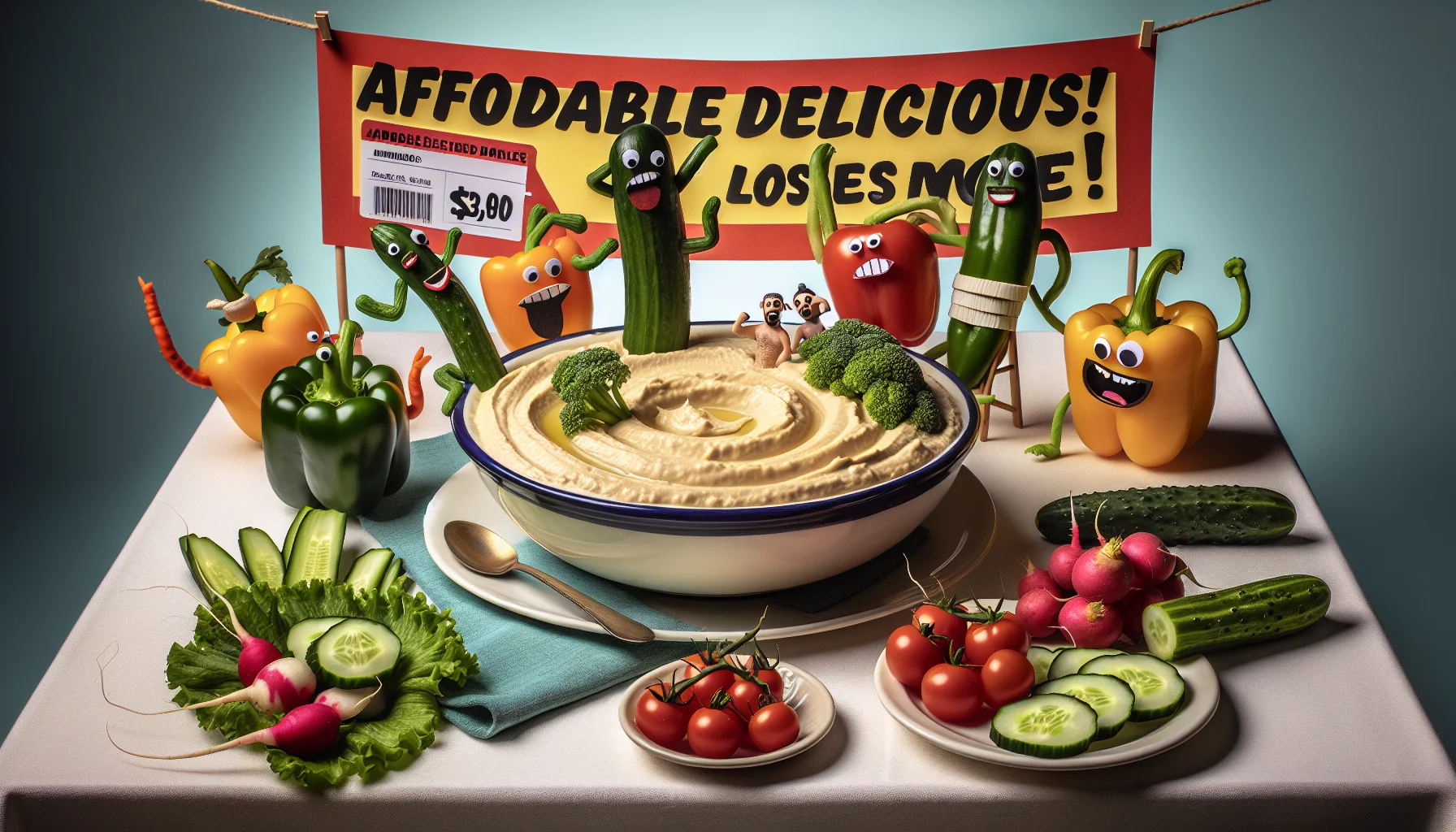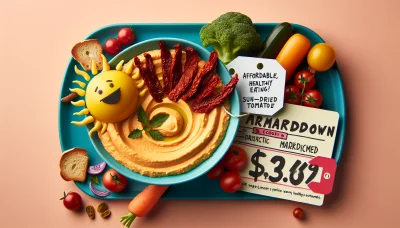What do you dip in hummus Quiz
Test Your Knowledge
Question of
What Do You Dip in Hummus?
Hummus is not only a delicious and creamy dip but also a nutritious choice packed with plant-based protein, fiber, and essential vitamins and minerals. Its versatility allows it to pair wonderfully with a variety of dippables, from fresh vegetables to whole grain crackers, making it a perfect snack for any time of the day. Whether you're looking for a healthy appetizer or a satisfying midday treat, hummus offers both flavor and nutritional benefits.
The Health Benefits of Hummus
Hummus is not only a delicious spread or dip originating from the Middle East, but it also offers numerous health benefits due to its nutritional composition. Rich in protein, hummus is an excellent choice for vegetarians and vegans looking for plant-based protein sources. The protein found in hummus can help in muscle repair and growth, making it a favorite among athletes and fitness enthusiasts. Additionally, hummus is a great source of dietary fiber, which is essential for digestive health and can aid in maintaining a healthy weight by promoting a feeling of fullness. Moreover, the healthy fats in hummus, primarily derived from olive oil and tahini, are beneficial for heart health. These unsaturated fats can help to lower harmful cholesterol levels and reduce the risk of heart disease. Overall, incorporating hummus into your diet can contribute to a well-rounded, nutritious eating plan.
Top Healthy Dippers for Hummus
- Carrot Sticks: Rich in beta-carotene, fiber, and vitamins A, C, and K, making them a crunchy powerhouse for eye health and immunity.
- Bell Pepper Strips: Packed with vitamins A and C, bell peppers are great for skin health and immune function. Their sweet, juicy crunch pairs perfectly with creamy hummus.
- Cucumber Slices: High in water content and low in calories, cucumbers are refreshing and hydrating, making them a light, guilt-free option for dipping.
- Cherry Tomatoes: Full of vitamins C and K, potassium, and antioxidants, cherry tomatoes offer a burst of flavor and nutrients in every bite.
- Radishes: Crunchy and slightly spicy, radishes are a unique dipper loaded with antioxidants and minerals, aiding in digestion and detoxification.
- Sugar Snap Peas: Sweet and crunchy, these peas are a good source of fiber, vitamins C and K, and provide a satisfying, healthy crunch.
- Broccoli Florets: These tiny trees are not only fun to eat but are also rich in vitamins C and K, fiber, and compounds that support detoxification and anti-inflammation.
- Cauliflower Bites: Another cruciferous vegetable, cauliflower is versatile and nutritious, offering fiber, vitamins C, K, and B6, and antioxidants with a mild, adaptable flavor.
- Whole Grain Pita Chips: For those who prefer a bit of crunch, whole grain pita chips are a fiber-rich alternative to regular chips, complementing the creamy texture of hummus perfectly.
- Apple Slices: While not a traditional choice, crisp apple slices offer a sweet contrast to savory hummus and pack a nutritional punch with fiber and vitamin C.
Creative Ways to Enjoy Hummus
Hummus, a delicious and versatile spread made from chickpeas, has long been a favorite for dips. However, its potential extends far beyond just a companion for carrot sticks or pita bread. For a refreshing twist, try using hummus as a flavorful spread on your morning toast, topped with avocado or tomato slices for a hearty start to your day. It can also transform into a creamy dressing for salads or bowls when thinned out with a little lemon juice and water. For those looking to add a protein-packed punch to their pasta, hummus can serve as a unique and nutritious sauce. Moreover, incorporating hummus into stuffed peppers or mushrooms before baking adds a delightful creaminess and depth of flavor. By exploring these innovative uses, hummus can easily become a staple in meals across the day, offering both nutrition and a new taste experience.
Hummus Varieties to Explore
When it comes to hummus, the traditional chickpea-tahini-olive oil-lemon-garlic combination is just the beginning. The market is now bursting with an array of flavors that promise to tantalize your taste buds. From the savory delight of roasted red pepper to the sweet charm of pumpkin hummus, there's a variety for every palate. Adventurous foodies can explore the spicy kick of jalapeno hummus or the earthy taste of beet hummus. For those who love a fusion of flavors, black bean hummus or avocado lime hummus might be the perfect pick. We encourage you to step out of your comfort zone and try these new and exciting types of hummus. Who knows? You might just discover your new favorite snack!
Making Hummus at Home
Making hummus at home is not only easy, but it also allows you to enjoy this delicious and healthy snack any time. By preparing it yourself, you can ensure it's made with fresh, wholesome ingredients and adjust the flavors to your liking. Here's a simple list of ingredients you'll need to get started:
- Canned chickpeas (garbanzo beans) - the base of your hummus
- Tahini - gives hummus its unique flavor
- Lemon juice - adds a fresh, citrusy zing
- Garlic - for that kick of flavor
- Olive oil - for a smooth texture and heart-healthy fats
- Salt - to enhance all the flavors
- Water - to get the perfect consistency
With these ingredients, you can create a basic hummus in just a few minutes. Feel free to add other ingredients like roasted red peppers, olives, or herbs to customize your hummus to your taste preferences. Enjoy the health benefits and deliciousness of homemade hummus today!
Incorporating Hummus into Your Diet
| Dip | Calories | Protein (g) | Fiber (g) | Sugars (g) | Fat (g) |
|---|---|---|---|---|---|
| Hummus | 70 | 2 | 2 | 0 | 5 |
| Ranch | 145 | 0 | 0 | 1 | 15 |
| Salsa | 10 | 0 | 0 | 2 | 0 |
| Guacamole | 50 | 1 | 3 | 0 | 4.5 |
This table highlights the nutritional benefits of hummus compared to other common dips. As shown, hummus offers a balanced mix of calories, protein, fiber, and fats, making it a superior choice for those seeking healthier eating options.












